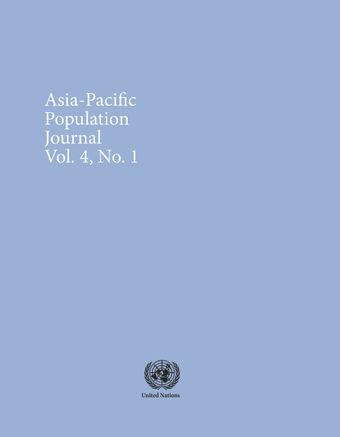-
Beyond demographic transition: Industrialization and population change in Singapore
- Source: Asia-Pacific Population Journal, Volume 4, Issue 1, Jan 1989, p. 35 - 48
-
- 23 Jan 1989
Abstract
Singapore is one of the first Asian countries to have adopted a vigorous population programme as part of its socio-economic development strategy. In 1966, when the Singapore Government established the Singapore Family Planning and Population Board (SFPPB) to offer family planning services and to disseminate the small family norm, the population was growing at about 2 per cent per year and the total fertility rate (TFR) stood at 4.7. Having just separated from Malaysia, Singapore was trying hard to gain a firm political and economic footing. The withdrawal of foreign military personnel based in Singapore further aggravated the unsettling economic base. The need to curb rapid population growth was obvious, and population control was viewed as critical in balancing the available economic resources with the demands of an increasing population.





